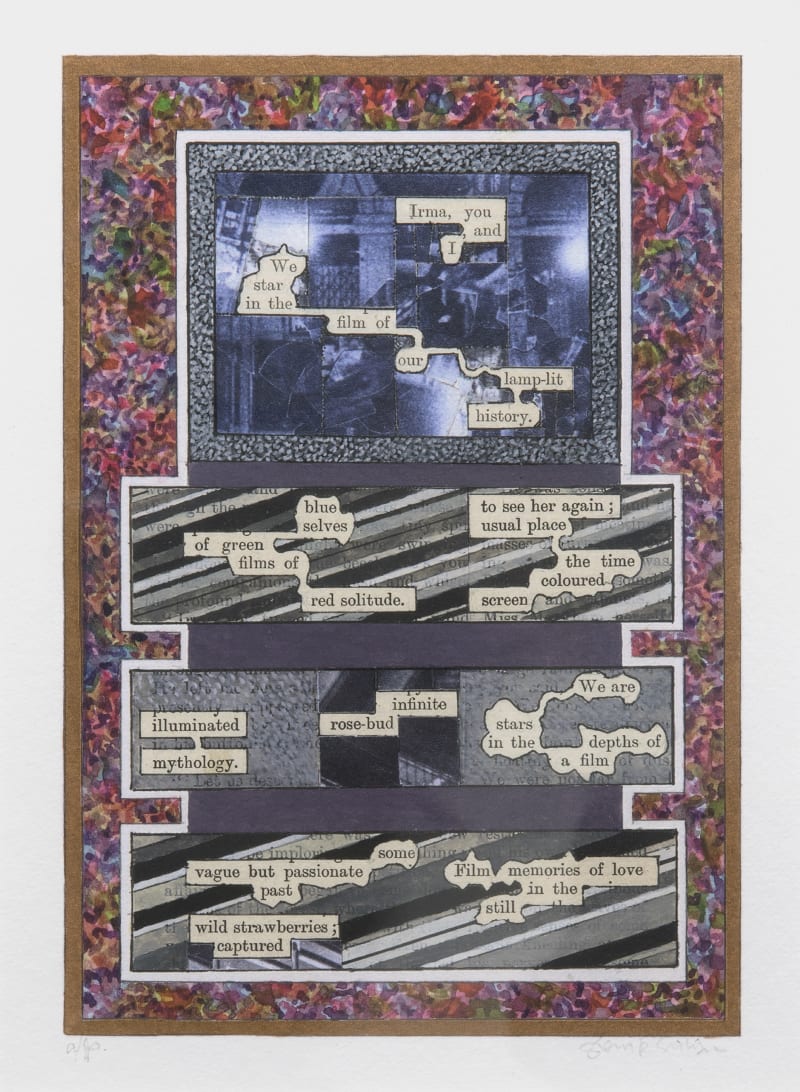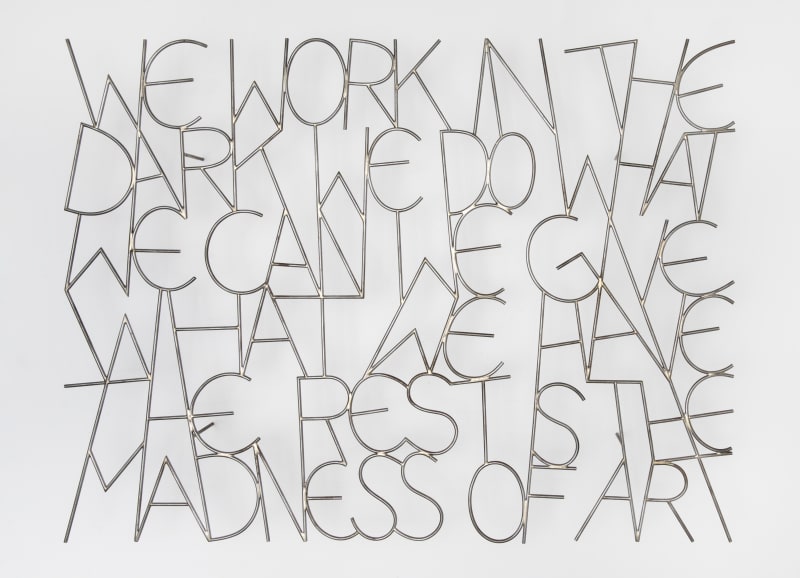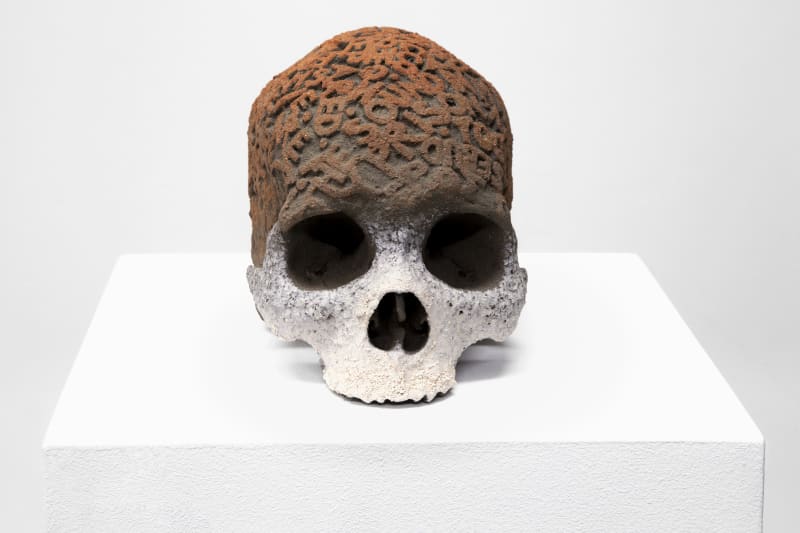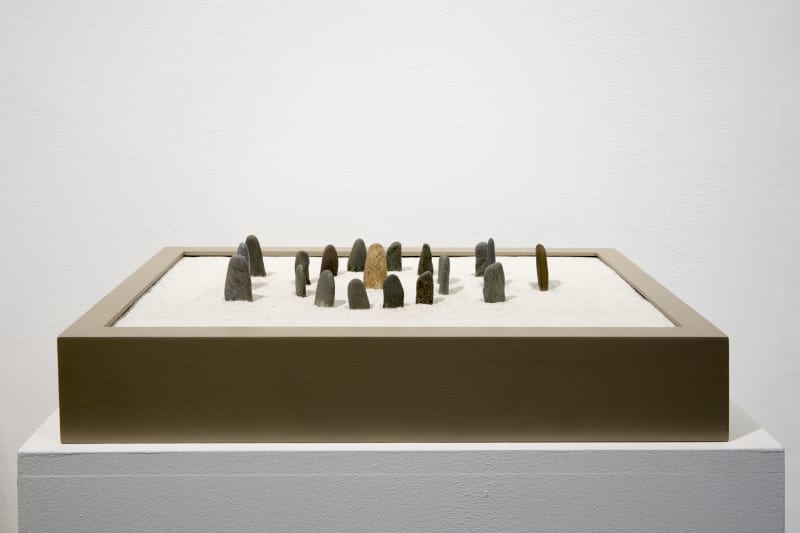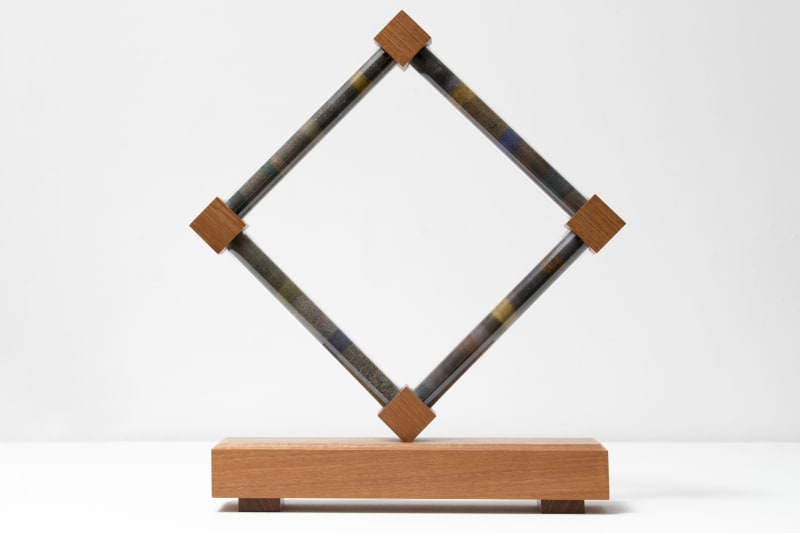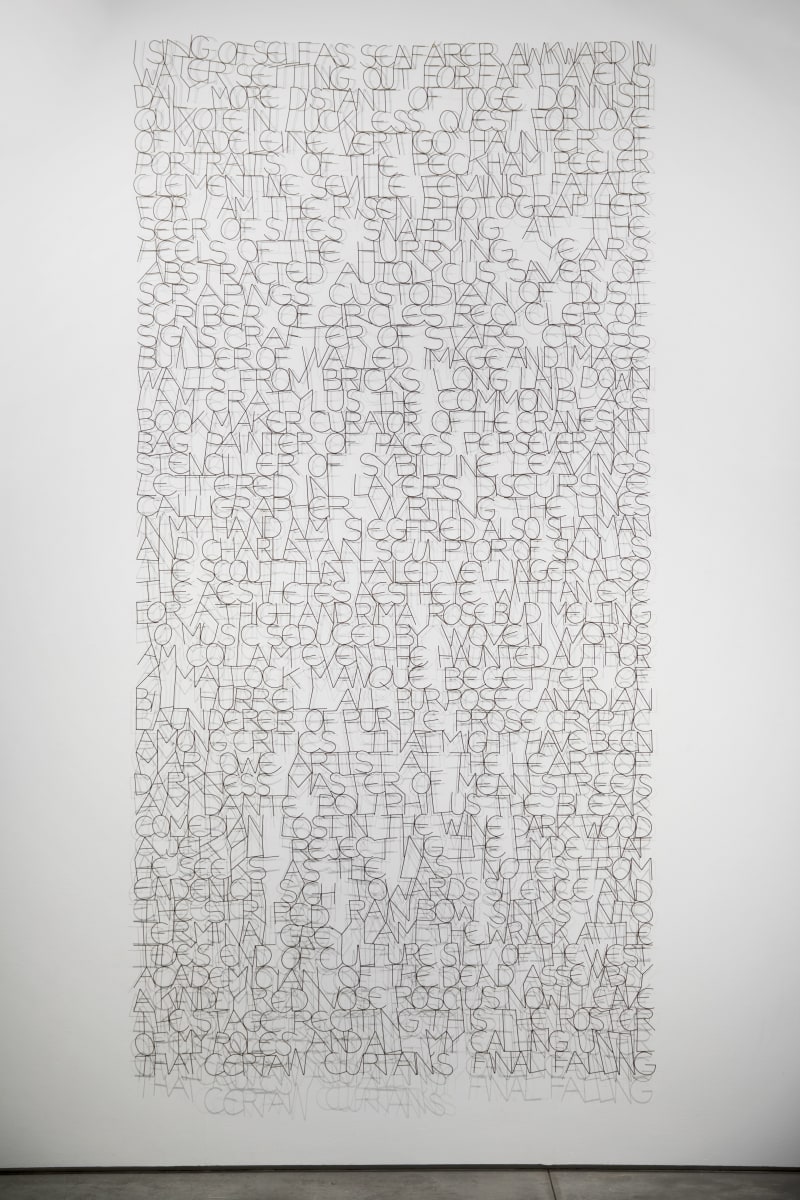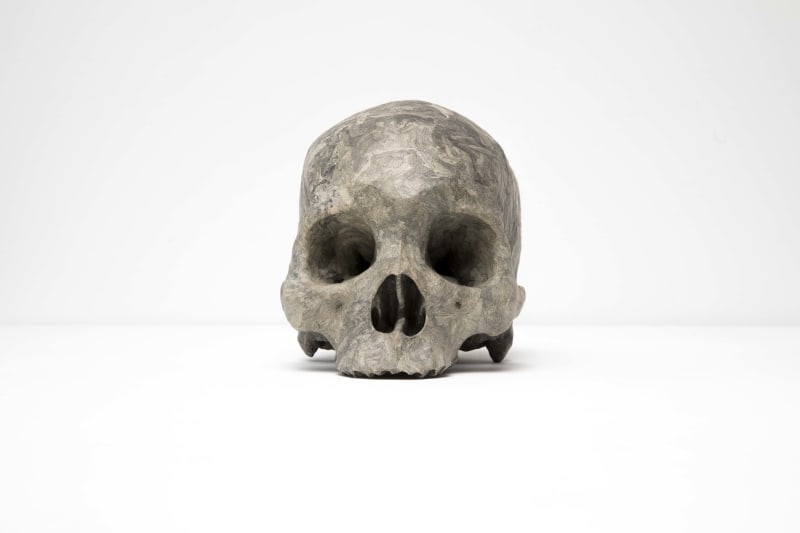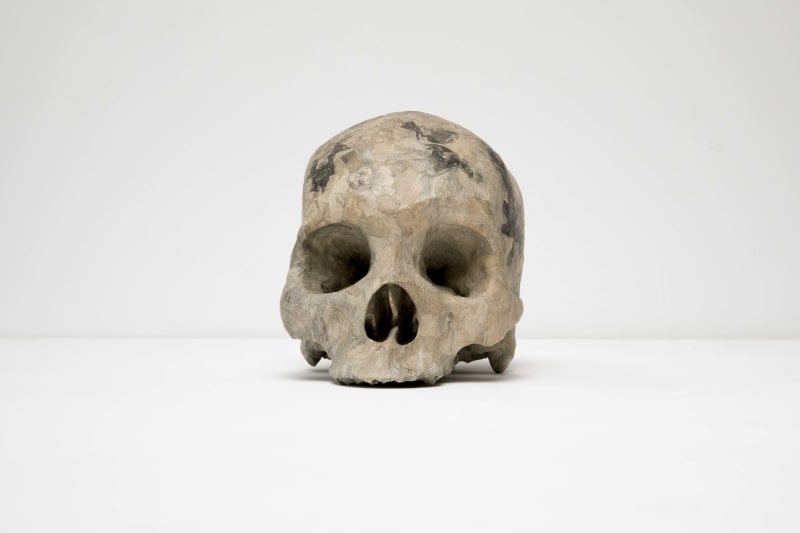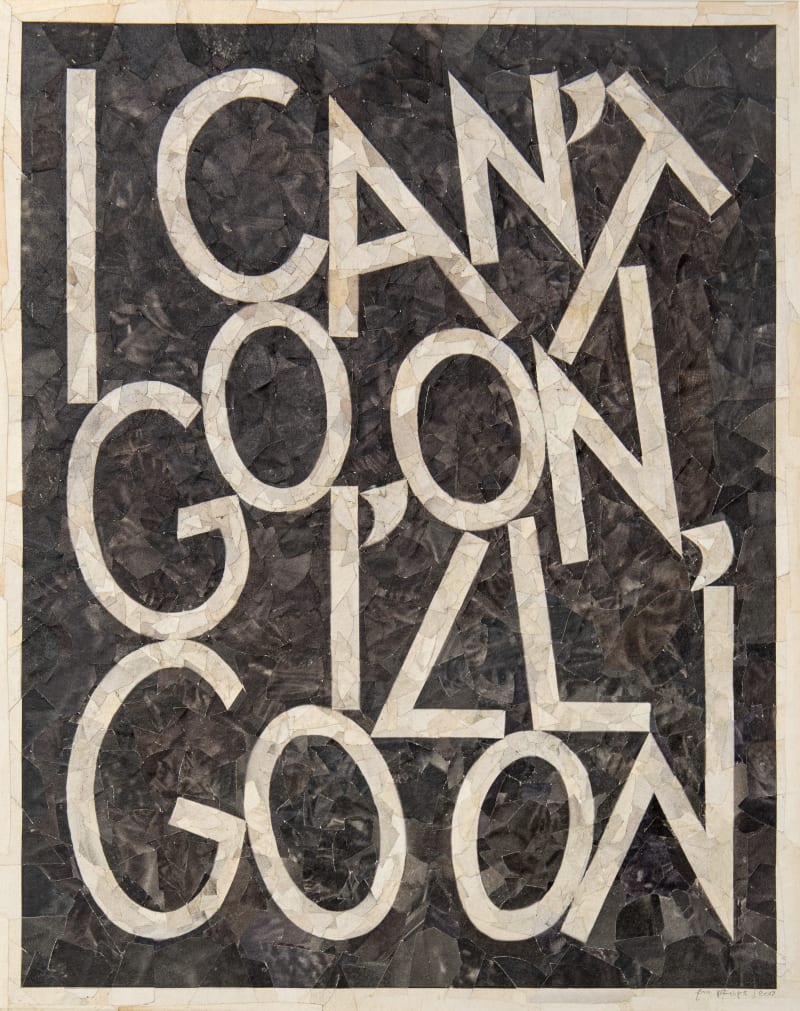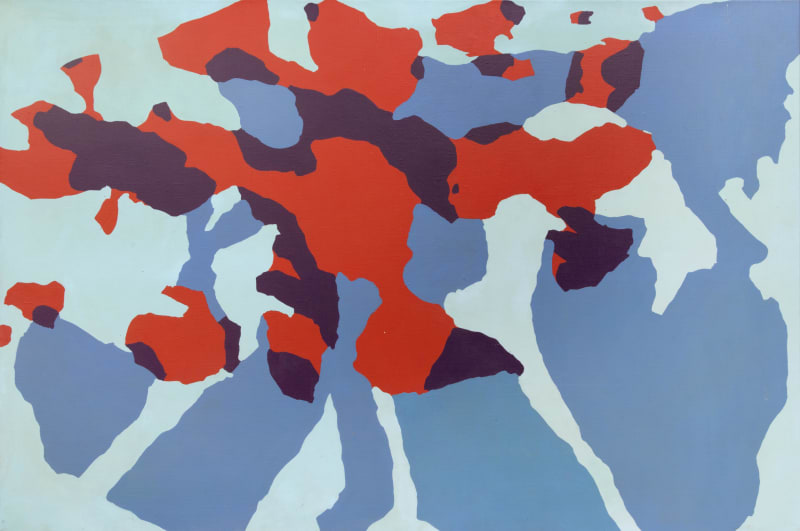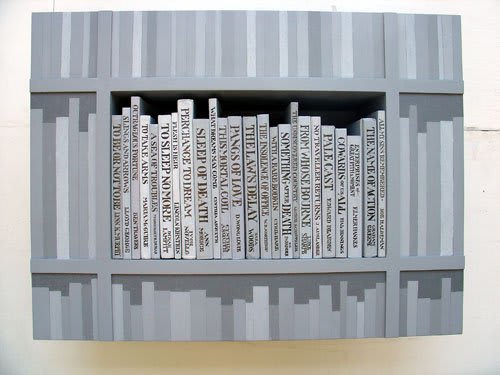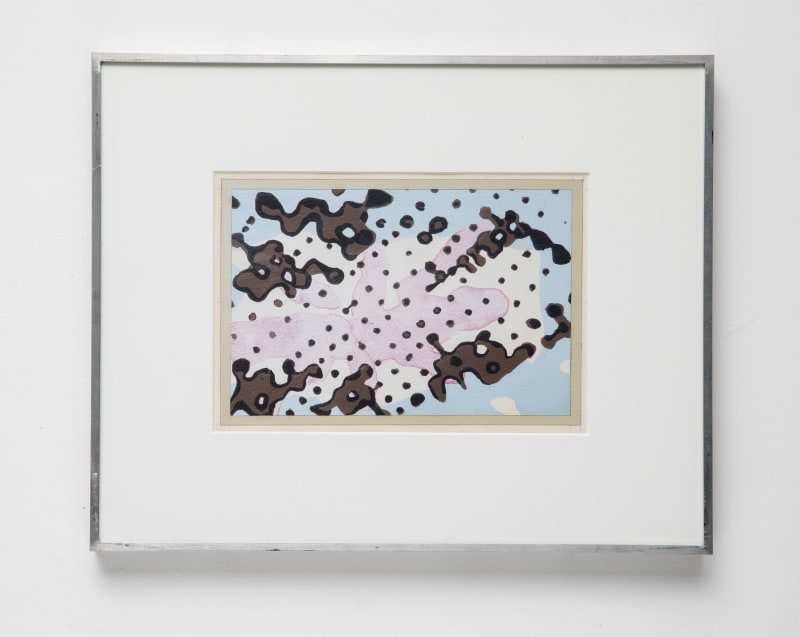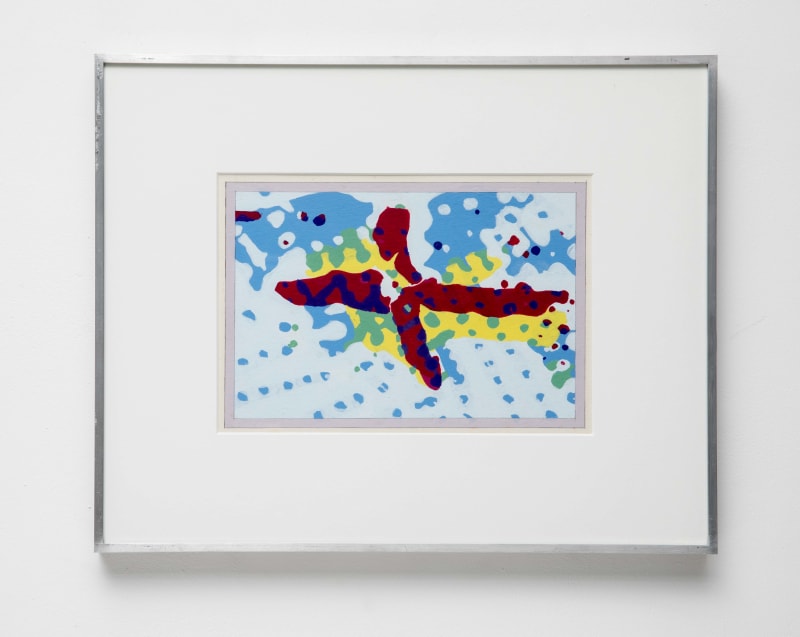Overview
Throughout his career, artist Tom Phillips has woven together many diverse modes of practice, including painting, sculpture, text, music, photography, video, design, and site-specific sculptural installations. This retrospective exhibition, which coincides with the artist's 80th birthday, gathers together a selection of works produced across five decades with particular focus on works in three dimensions, tracing the themes, systems and processes that have often corresponded and converged within Phillips’ durational projects.
The exhibition features several calligraphic works on a large scale. The wire, wall-mounted sculpture Song of Myself (1995) addresses notions of identity and artistic subject matter through verse, rendered in a script of the artist’s own design. A cubed structure titled Wittgenstein’s Cage (2009), exemplifies Wittgenstein's proposition ‘The limits of my language are the limits of my world’ where the text can be ‘read’ on several planes simultaneously in layered, mirrored and condensed form, thus demonstrating Wittgenstein’s ‘trap of language’.
The painting Thesis as Object: With Scholarly Apparatus (1969) continues the confusion of letterforms with overlaid texts that divorce the painting’s calligraphic essence from the act of reading. In the pictorial surrounds, stripes of colour act as a catalogue systematising the method of painting and the order in which the colours were applied. Colour Catalogues (sometimes also known by the German word ‘Farbenverzeichnis’) first appeared in Phillips’ work in the mid-1960s, introducing an oppositional strategy of chance to his increasingly organised paintings. The width of each column was determined by the toss of a coin, with the system allowing unexpected colour harmonies to emerge (an approach that echoed his burgeoning interest in experimental music, and would later define the structure of his notational works). The catalogues also fulfilled an important function of recycling – by using the remaining mixed paint, no materials went to waste. This developed into a further long-running series titled Terminal Greys beginning in 1970. Each week, colours left on the palette were mixed to create a grey tone that was recorded in sequence, revealing the discreet nuances of chroma and hue from one to the next. The densely encrusted coagulations of paint seen here in Terminal Greys (1973) result from the rule that all traces of remaining paint be used.
A selection of treated or ornamented skulls relate directly to Phillips’ scholarly interest in the decorated skulls of Oceanic and African art (Phillips curated a major exhibition, Africa: The Art of a Continent at the Royal Academy and Guggenheim Museum in 1995). The skulls on display originate from an original fetish skull, re-worked and cast in bronze or plaster and collaged with other mixed media. The example of Trophy Skull (1996) examines the cross-cultural nature of ornament, which Phillips has observed as being "universally understood even when its sources of symbolism have become arcane."* Here, Phillips' rhythmic constellations of dots, crosshatches and stripes explore the generative syntax of ornament stemming from the designs and geometries found in the natural world.
One of Phillips’ most well-known durational works is A Humument, a book project extending over fifty years, in which every page of a second-hand Victorian novel was transformed by painting, collage and cut-up techniques, (recently published in its sixth and final edition by Thames & Hudson.) Derived from this project, the sculpture Humument Desk (2016) is collaged with fragments from the treated text connecting in rivers of non-linear narrative across its surface.
Phillips’ interest in the structural processes of repetition, layering and linkage can also be seen in the tapestry and quilt works on display. A tapestry titled Flag (1974) explores the correspondence between images in two and three dimensions, taking the printed reproduction of the flying Union Jack as a starting point. Finding hundreds of variations in printed postcards of the Union Jack that were degraded and distorted through the printing process, Phillips reconstructed these in an alternative textile form. Also on display are twelve corresponding designs based on the reconstructed postcard images, and relief maquettes developed to aid the process of translation between two and three-dimensional forms.
A two-sided sculpture of an artists’ palette titled Beckett Again (2009), viewed both at the entrance and exit of the exhibition, is inscribed on each side with a sentence from the closing phrase of Samuel Beckett’s The Unnameable: ‘I can’t go on’ / ‘I’ll go on’ - a stoic response to the chaos and suffering of the human condition. Meanwhile, a sense of playful uncertainty pervades the mixed media sculpture If I’ve Told You Once (2003), a structure housing ten copies of a Pelican Books publication by D.S. MacColl titled with the grandiose query, What is Art?
In September 2017, the South London Gallery hosts the world premiere performance and an audio-visual installation of his opera Irma on the 16 and 17 September 2017, drawn from his Victorian novel artwork A Humument. Taking place in the SLG's main gallery, Irma Opus XIIB is directed and designed by Netia Jones and Lightmap, with musical direction by Anton Lukoszevieze and Apartment House; produced by Sound UK and funded by Arts Council England and Hinrichsen Foundation. Further information will be available on the SLG website: www.southlondongallery.org.
ABOUT TOM PHILLIPS
Born in London in 1937, Tom Phillips attended St. Catherine’s College, Oxford and Camberwell School of Art. He was elected to the Royal Academy of Arts in 1989 and was Chairman of the Royal Academy’s Exhibitions Committee from 1995 to 2007. He has had retrospective exhibitions at the National Portrait Gallery, London; The Royal Academy, London; The Victoria and Albert Museum, London; and The Yale Center for British Art, New Haven. Since the mid 1970s, Phillips has received many commissions for site-specific artworks and portraits. He has made tapestries for St. Catherine's College, Oxford, street mosaics for his native Peckham, and ornament and memorials for sacred spaces, including both Westminster Cathedral and Westminster Abbey. Phillips's portrait subjects have included Samuel Beckett, Iris Murdoch, Sir Harrison Birtwistle, and the Monty Python team. Phillips received the Frances Williams Memorial Prize in 1983 for his illustration and new translation of Dante's Inferno, and co-directed a television adaptation of the Inferno with Peter Greenaway. As well as creating his own opera Irma, based on the characters of A Humument, Phillips devised the libretto for Tarik O'Regan's operatic version of Conrad's Heart of Darkness which premiered at the Royal Opera House's Linbury Theatre in 2011, and had its US premiere at San Francisco’s Opera Parallèle in 2015.
*Tom Phillips, The Nature of Ornament: A Summary Treatise, presented to the Architecture Forum at the Royal Academy of Arts on 28th October, 2002, later published in the Architectural Review, 1st April, 2003.
Works

